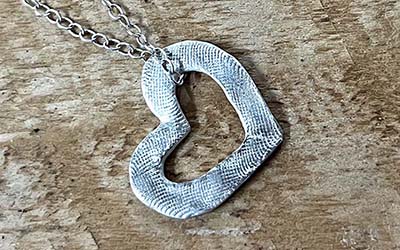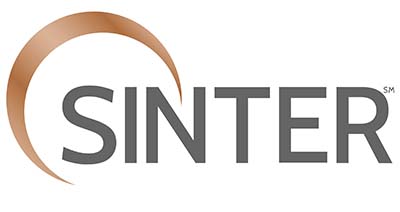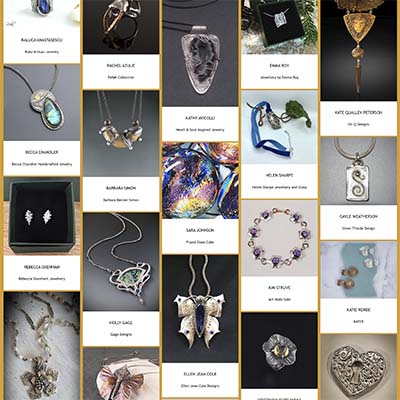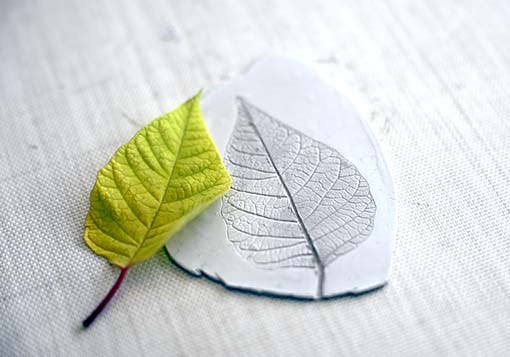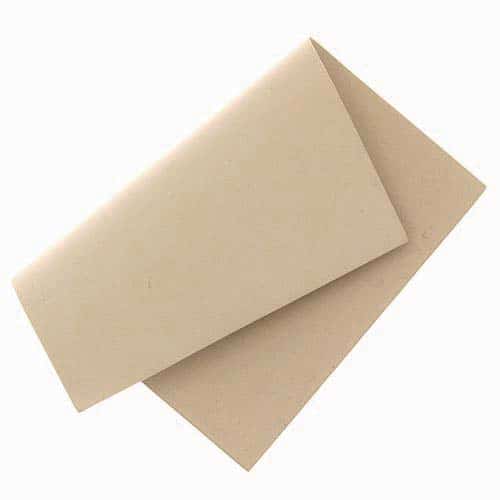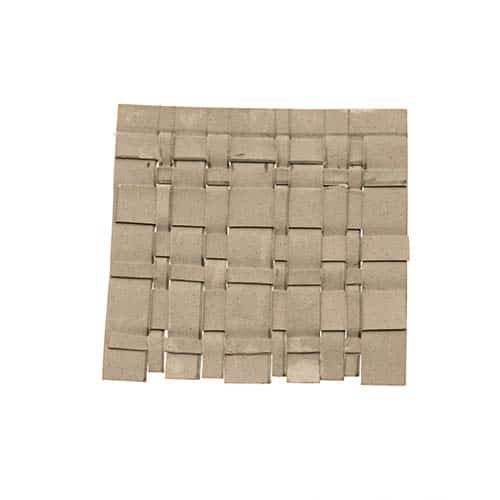Types of Metal Clay
Metal clay is available in different forms – as a powder that can be mixed to create a malleable lump of clay, as a ready-made lump clay, as a paste, in a syringe for extrusion and as a foldable form known as sheet or paper.
Lump Clay
Lump clay is smooth and malleable right out of the package and readily accepts fine textures such as fingerprints or impressions made with natural leaves, embossed paper, or lace. Fresh clay can be rolled, shaped, sculpted, textured, extruded, and formed just like any type of ceramic or modeling clay.
Simple tools such as cookie cutters, molds and craft knives can be used to shape fresh clay. Once it is dried the clay can be carved, drilled, pierced, filed, sanded, or burnished to smooth the surface, refine the texture or add details.
Fresh lump clay with a leaf texture
Powder Clay
Powder clay comes in all types including fine silver and a number of base metals. Base metals like bronze, rose bronze, golden bronze, white copper, etc., use different amounts of each metal type in their composition and are referred to as alloys. This means they are made up of more than one type of metal – for instance bronze clay is a mixture of copper and tin. The different colors of bronze clay contain more or less of each metal to achieve the final color.
Because most alloyed metal clays use different amounts of each metal type in their composition, it can be difficult to divide them consistently. Shaking the package well before using it can help to distribute the constituents more evenly but even so, it’s tricky to get a consistent mix. When using an alloyed powder clay, you’ll achieve more consistent results by mixing the whole package into lump clay at once.
Powder clays that only contain one metal like fine silver and copper can be mixed in smaller quantities making it more cost effective.
As a design element, powder clay, whether from one of the manufacturers who offer it, or as the result of sanding, can be used to texture fresh or dry clay to create a beautiful stucco-like texture.
Lora Hart, Bi-cone bead. Texture made with powdered (sanding dust) clay
Paste or Slip Clay
Slip is a pottery term used to describe very thin, watered down clay. Metal clay artists use the terms paste or slip to describe clay that has had water added to make it into a consistency suitable for their needs. Slip might be mixed to the consistency of nail polish while paste is generally thicker, and more like peanut butter. You can also buy ready-made paste from metal clay suppliers.
Mixing a little water into a pea sized piece of lump clay will transform it into a thick paste which is a great consistency to use when sticking pieces together, completing repairs or embedding commercially made findings. The more water added, the thinner the paste becomes. While thin paste can also be used for repairs and joins, too much water makes it slippery and connections are not as reliable until the paste dries. Thin paste can also create decorative 3D textures when it is spread through a stencil or trailed onto dry clay with a paintbrush or toothpick.
When applied to combustible materials (like leaves, twigs, textiles, etc.) with a brush, thin paste picks up the contours of natural surface detail like veins, bark, or other 3D elements. Dry organic material coated with metal clay can be kiln fired – burning out the organic parts and leaving a natural form in metal.
Tip: Take care not to fire shells, pearls, or bone in the kiln. The fumes may be toxic and unhealthy to breathe.
Paste can also be applied to metal clay pieces in a decorative way, imitating grains of sand, bark textures, leaf veins or cracks, and fine silver paste can be painted onto copper metal clay pieces in order to develop visual contrast. Paste clay can be also be painted onto sheets of metal, ceramic, or glass if the item can withstand kiln firing temperatures.
Paste applied on a leaf
Julia Rai, Pod brooch. This design uses thick paste and a cocktail stick to add texture
Syringe Clay
Syringe clay is a unique formulation packaged in a syringe, has a consistency like very thick paste and is specially formulated to hold a cylindrical shape when extruded. Syringe can be used as a joining or repair material or in an ornamental way like cake decorating. One popular syringe technique is to follow a traced design to make delicate filigree or lacy pieces of jewelry.
Syringes sold by most manufacturers are packaged with at least one small diameter plastic tip but additional sizes and shapes are available for purchase. The tip can also be cut with scissors to create a larger hole if necessary.
Syringe clay works well as an outline
Paper /Sheet Clay
This form of metal clay feels like a sheet of paper, is flexible, and does not dry in the same way or as fast as the other forms of metal clay. Both Precious Metal Clay (PMC) and Art Clay Silver (ACS) manufacture paper or sheet type clay. PMC calls theirs Silver Sheet while ACS’s is named Paper Type. Although each brand markets their product by a different name, they’re very similar and each has slightly different characteristics so it’s fun to experiment with both brands.
Paper/sheet clay can be cut with scissors, craft knives or paper punches and embossed, folded, scored, or etched using a desktop die cutting machine. The flexibility of paper/sheet clay gives you the opportunity to use techniques like quilling, origami or weaving all of which are commonly used with writing paper, leather, vinyl, and other flexible materials.
Paper clay can also be used to construct functional elements like hinges and bails, and it can be applied to a dry or fresh lump clay base as a decorative appliqué. Paper clay can be used to patch tears or make other types of repairs by using a small amount of water or thin paste to adhere it. Paper/sheet clay has a long shelf life and does not need to be kept in an airtight container, although it should be protected from moisture.
While lump, paste and syringe clays can be rehydrated by adding water or mixed together to create fresh lump clay, the paper/sheet cannot be combined with other types when rehydrating. Adding too much water to the paper or sheet type clay makes is gummy and it will contaminate the dry clay and make it difficult to work.
Tip – Be cautious when using water with paper type clay. Once wet it will stick to whatever it touches and cannot be removed. Paper clay will begin to melt or dissolve with the addition of even a tiny amount of moisture so be very careful when sticking it to something
Paper / Sheet clay
Paper clay can be used for weaving
Tracey Spurgin, Fuchsia earrings


